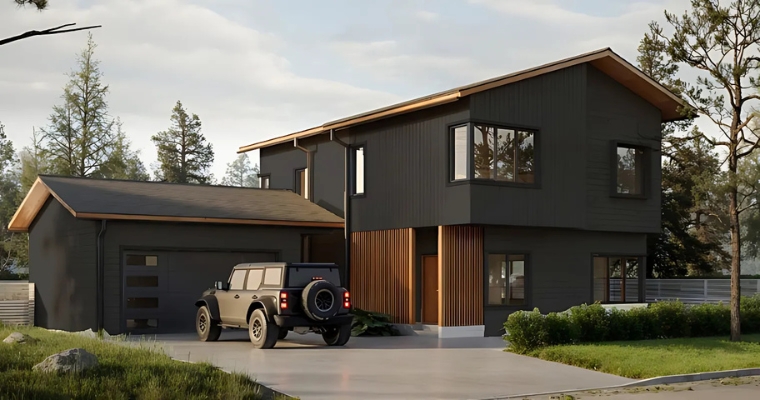Average Home Price in Whitefish Montana (2025) – What You Should Know
Whitefish, Montana, is where mountain landscapes meet intentional design, and its real estate market reflects that unique balance of lifestyle and value.
What Is the Average Home Price in Whitefish?
As of the latest data, the average home price in Whitefish typically ranges from $850,000 to $1.2 million, with most homes trading in the high six figures to low seven figures. Lakefront properties, ski-access homes, and newly built eco-luxury residences often command a premium above that range.
In this guide, you’ll find a full breakdown of pricing by property type, recent market trends, and neighborhood insights. We’ll also explore the role of sustainability in long-term value, financing considerations, and practical tips for buyers and investors navigating the Whitefish market today. For more on investment opportunities, check out investment property offerings in Whitefish.
Why Whitefish is a Hot Market
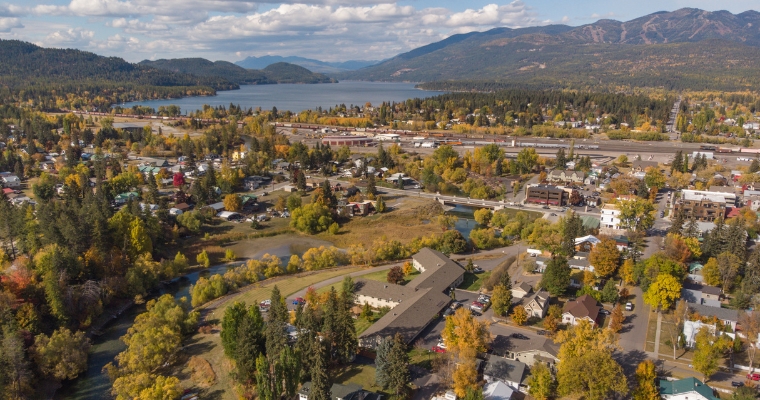
Let’s start with the most natural question, why is the Whitefish market so hot right now? To start with, Whitefish has access to Glacier National Park, Whitefish Lake, and Whitefish Mountain Resort. Add to that a compact, walkable downtown, and you have an outstanding deal at hands.
That combination supports year-round demand from outdoor oriented buyers, resort visitors, people seeking a small mountain town with conveniences, you name it. And, this is where sustainability and energy efficient construction adds an elevated appeal for buyers who want lower operating costs and more importantly, healthier indoor environments.
That is why Eco Residency positions its projects to match that demand. It offers eco-luxury homes that emphasize three main components serving those demands in perfect synergy:
- Performance
- Material Quality
- Careful (and Industry-Standard) Site Design
This mix makes Whitefish attractive for second homes and long term owner occupants – and , rental properties – who value place and performance.
What is the Current Average Home Price in Whitefish, Montana?
Now, different data providers measure value differently. Therefore, we recommend using multiple sources to get a full picture. For instnace, Zillow reports a typical home value in Whitefish of $858,051, based on its “Home Value Index”.
On the other hand, Redfin’s most recent median sale price for all home types in Whitefish was $899,000. This was more focused on actual transactions. And similarly, Realtor.com’s active listing inventory shows a higher median listing price, around $1,190,000. That reflected the impact of luxury properties and premium locations.
So, take them together, and these figures suggest most homes in Whitefish trade between the high six-figures and low seven-figures (with a meaningful premium for lakefront, ski-adjacent, or newly built eco-luxury homes).
FEATURED LISTING
EXCLUSIVE WHITEFISH LISTING – 824 E 10TH STREET
Discover the exceptional features and prime location of this stunning home. With unique design and a rare investment opportunity, this is your chance to make it yours. Get full details today.
Let’s Do a Price breakdown by Property Type
Now, let’s talk about a more nuanced price breakdown – based on property type. For instance, you can’t expect to form a budget for a condo the same amount as a single-family home, can you?
Single Family Homes
Most single-family homes in preferred neighborhoods sell for amounts that commonly range from the high six figures into the multi-million-dollar tier for exceptional lakefront or large acreage parcels. These are the properties that drive the higher end of the average home price in Whitefish Montana.
Condos and Townhomes
When talking about condominiums and townhouses, they offer a lower price entry point. More importantly, they often appeal to seasonal tenants and buyers who want a lock-and-leave lifestyle. However, current condo inventory often begins in the mid-six figures and rises for premium units close to the resort or downtown.
Vacant Land
Now, buildable lots show the widest range in price because site work, utility access, and views vary so much. Infill lots near Central Avenue or the lake are priced per square foot at a premium. Meanwhile, more remote parcels price lower but add infrastructure costs.
What Are the Recent Trends (Supply and Demand)?
The Whitefish market showed both periods of rapid appreciation and phases of normalization. After swift gains earlier in the decade, some months in 2024 and 2025 showed modest cooling in median sale price and longer days on market.
At the same time, list prices for luxury properties stayed high. That phenomenon is what creates a split market where higher-end sales push list metrics upward even when median sale metrics are on a flatter line.
As a result, the inventory remains constrained in desirable pockets because topography and conservation limit developable land. And, the supply constraint supports long-term value. Furthermore, out-of-state buyers, including many from larger metropolitan areas, continue to add demand pressure.
Eco-Luxury Homes and Sustainable Development
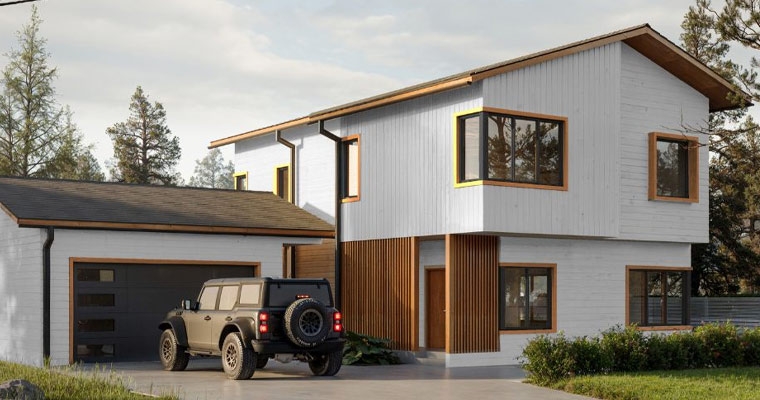
Today, eco-luxury housing is more than a marketing label (which it was a decade or two ago) . In Whitefish, luxury home building in Whitefish combines high-performance building systems and renewable energy readiness with material choices that reduce lifetime impact.
In fact, sustainable building and net-zero homes are gaining popularity because they offer practical benefits through energy-efficient mechanical systems. On top of that, there’s improved insulation and passive design that significantly reduce the carbon footprint you have on the environment.
In fact, if you look up Eco Residency, you’ll find that local materials and careful site stewardship can also reduce embodied carbon. These features and practical benefits are what attract buyers who are willing to pay for lower operating costs and higher indoor comfort.
Is Now a Good Time to Buy or Invest?
Well, the decision depends on your goals. If you’re a lifestyle buyer who plans to hold long term, then modest near-term market softness will be opportunity for you. However, if you’re an investor who relies on short-term rental income, you should model conservatively and verify occupancy and seasonal rate data.
With high mortgage rates squeezing cash flows, energy-efficient design and lower utility bills will help you with the operating side of the ledger. If you plan to build, you need to secure site assessments and cost estimates up front.
Make sure you include lifecycle energy modeling when comparing builder bids. This is where Eco Residency offers you guidance, and helps you understand building costs and project phasing.
What About Financing and the Affordability Picture?
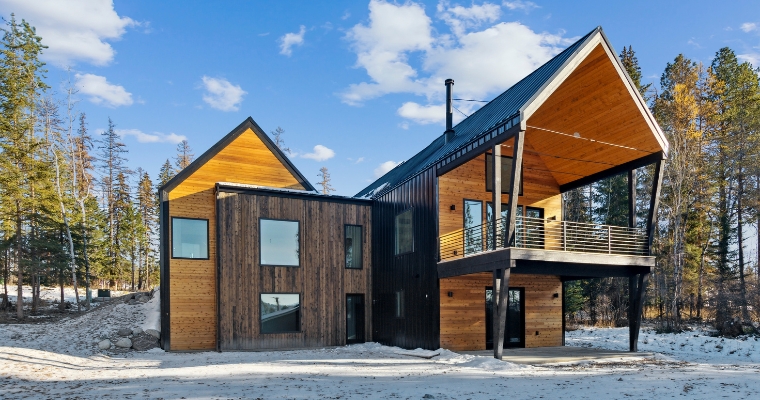
Yes, building a home in Montana has moved into national conversations about affordability, where median prices can outpace local incomes in many desirable towns (something that has become a trend). What does that mean? It means buyers must be conservative with mortgage calculations and consider total ownership costs.
As a buyer (or investor), you need to work with lenders who are familiar with regional values and seasonal income assumptions. Especially if you plan to use rental revenue for underwriting. Also, you’ll have to consider the total cost of ownership (which will include property taxes, insurance, and home energy costs) when you’re comparing properties.
And don’t forget that local market services and broker reports can help you understand factors like days on market, list-to-sale ratios, and price per square foot, which can differ significantly by neighborhood.
An Overview of Neighborhoods and Micro Markets
One of the first things to know about living in Whitefish is that it has several distinct micro markets. You’ve got Downtown and lakefront locations that lead in convenience and walkability. Furthermore, you’ve got Ski adjacent neighborhoods that command a premium for winter access. And in the older neighborhoods and properties that need renovation, you’ll get lower entry points but might require capital for updates.
So, when comparing properties, use sold comparables that match outdoor access, lot size, and view quality to estimate realistic values.
Renovation and Build Cost Considerations
If you buy to renovate or explore home building in Whitefish (for both aesthetics and performance), it might yield more long-term value. But, you have to be specific and align with the trends in the real estate market there.
So, for high-impact energy upgrades, you can consider:
- Attic and wall insulation
- High-performance windows
- Heat pump systems
- Efficient water heating
On the other hand, cosmetic improvements such as kitchens and baths might increase marketability. But if you want lasting value, pair the aesthetic upgrades with performance upgrades.
Sample Investment Math and Realistic Expectations
A quick example should clarify why conservative modeling matters nowadays. Let’s say there’s a property at $1,200,000, which produces $3,200 per week in peak season and an average of $1,200 per week across the full year.
That produces a theoretical gross annual revenue of around $62,400.
Now, against the purchase price, the gross yield equals about 5.2%. After subtracting management fees, cleaning, utilities, maintenance, insurance, property taxes, and vacancy, net yields commonly fall to the low single digits.
That is why investors often focus on total return, by combining modest annual cash yield with longer-term appreciation. And when calculating returns, you also want to factor potential capital expenditures for seasonal wear and assume conservative occupancy rates rather than optimistic peaks.
If you are a buyer who wants income to offset ownership costs, you can run multiple scenarios, including reduced demand and higher expense assumptions, to see worst-case outcomes.
Practical Tips for Buyers and Investors
Buying in Whitefish can be rewarding, but the market has unique dynamics. To make smart decisions, you need to plan carefully and look beyond the listing price. Here are some practical tips, whether you’re a buyer or investor:
- Work with a local realtor who understands Whitefish micro-markets and seasonal demand patterns
- Confirm short-term rental rules with town planning offices or HOA documents before making income projections
- Run cash flow models using conservative occupancy rates and higher-than-expected expense allowances
- Inspect properties for wildfire risk and verify access to utilities, especially for homes outside town limits
- Request recent energy-use estimates from sellers and compare them to modeled performance for new builds
- Consider staged project phasing if building an eco-luxury home, to spread capital outlay over time
How Builders and Developers Can Compete
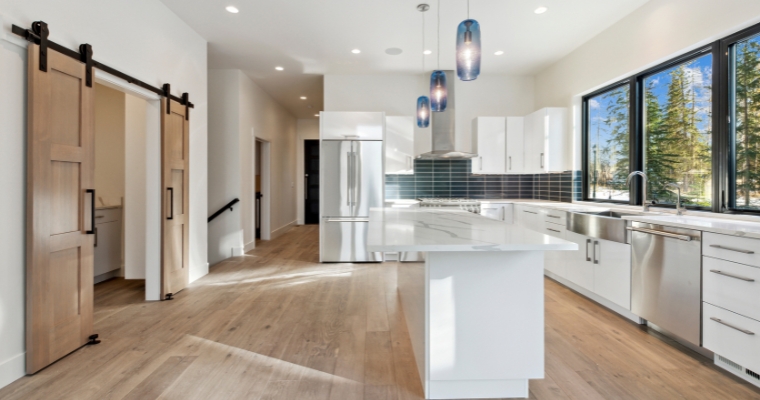
Developers who focus on quality and energy efficiency are the ones buyers notice. Why? Because buyers don’t just want someone to put up a house. Instead, they want someone to deliver a home that’s well-designed, fully permitted, and ready to meet seasonal rental demand.
With that said, working closely with local authorities helps cut down on delays. Meanwhile, smart site planning (like preserving mountain views, managing drainage, and reducing wildfire risk) makes a property far more attractive in the Whitefish market.
Questions to Ask Your Agent or Builder
- What recent sales are most comparable to this listing and why are they similar?
- How do seasonal patterns influence sale to list ratios in the neighborhood?
- What restrictions, if any, affect short term rentals in this subdivision or HOA?
- What permits or utility work will be required for building on this lot?
- Can you provide recent energy use data for comparable homes if the seller provides it?
Checklist for Planning an Eco-Luxury Build
- Secure a full site assessment including soils, access, and wildfire mitigation.
- Request lifecycle energy modeling when planning a net-zero home and compare HVAC and envelope options.
- Budget for local finishes and durable materials that reduce long term maintenance.
- Phase landscaping and exterior work to manage cash flow and erosion control.
- Review warranty coverage for renewable systems, windows, and mechanical equipment.
When you work with an experienced local builder, it reduces surprises and helps manage schedule and cost.
Should I Consider a Renovation and Resale Strategy?
If you buy a resale property, prioritize upgrades that offer measurable returns. Upgrades such as improved insulation, high performance windows, efficient heating systems, and robust water heating yield both comfort improvements and lower operating costs. Cosmetic updates matter in attracting buyers, but pairing aesthetics with energy improvements strengthens resale value and marketing. For properties intended for rental, durable finishes and ample storage for guest gear improve turnover efficiency and reduce maintenance friction.
What Risk Factors and Market Signals Should I Watch For?
Whether you buy or invest in Whitefish real estate, there will be both opportunities and challenges. And, to make informed decisions, you need to keep an eye on market signals and focus on what adds value, especially if sustainability is a priority.
Risk Factors to Monitor
- Interest rate shifts that impact affordability
- Local rental regulation changes
- Wildfire mitigation requirements in mountain areas
- Rising insurance costs for forested properties
- Market indicators like days on market and list-to-sale price ratios
- Broader economic conditions influencing buyer demand
Value Drivers for Eco-Conscious Buyers
- Recognized certifications and documented energy modeling
- Systems that reduce long-term operating costs
- Materials with low embodied carbon
- Reliable local contractors for efficient builds
- Energy use estimates and warranties for mechanical systems
Frequently Asked Questions
Many buyers want to know the ongoing costs beyond mortgage and maintenance. Property tax rates in Whitefish are based on the assessed value of the property and local mill levies. The exact rate depends on the tax district, but it’s important to estimate property taxes (and possible increases) when calculating total cost of ownership.
Local zoning, setbacks, conditional use permits, and building codes significantly affect what can be built and how renovations are done. For example, the City of Whitefish has clear rules about required setbacks, building heights & lot coverage in various zones. City of Whitefish Permit requirements kick in for structures over certain sizes, and some neighborhoods have additional architectural or environmental review processes.
Understanding how quickly homes sell, how many offers they get, and how crowded inventory is can be very useful. In recent 2024-2025 data, the market has shown tight inventory in desirable neighborhoods, and well-priced homes often receive offers quickly. But there are periods of cooling where days on market increase, especially for luxury homes or those in less central locations. (You might want to insert recent figures or trends here for up-to-date context.)
FEATURED LISTING
EXCLUSIVE WHITEFISH LISTING – 824 E 10TH STREET
Discover the exceptional features and prime location of this stunning home. With unique design and a rare investment opportunity, this is your chance to make it yours. Get full details today.
Final Thoughts
So, the average home price in Whitefish Montana sits within a band of mid-six-figure to lower seven-figure. And, the factors that affect these prices are:
- Limited supply
- High lifestyle demand
- Growing interest in eco-friendly homes
A decade or two ago, it was difficult to understand how eco-friendly homes could become the mainstream trend in the real estate industry. However, buyers who value sustainability and long-term operating savings find differentiated value in eco-luxury projects.
These types of projects combine modern design with responsible construction. So, whether you aim to buy resale, rent seasonally, or build new, you want to use:
- Local comparables
- Conservative financial modeling
- Expert local partners
For a conversation about sustainable design and net-zero planning in Whitefish, reach out to Eco Residency.
Contact Eco Residency to discuss site options, timelines, and realistic budgets for sustainable homes.
